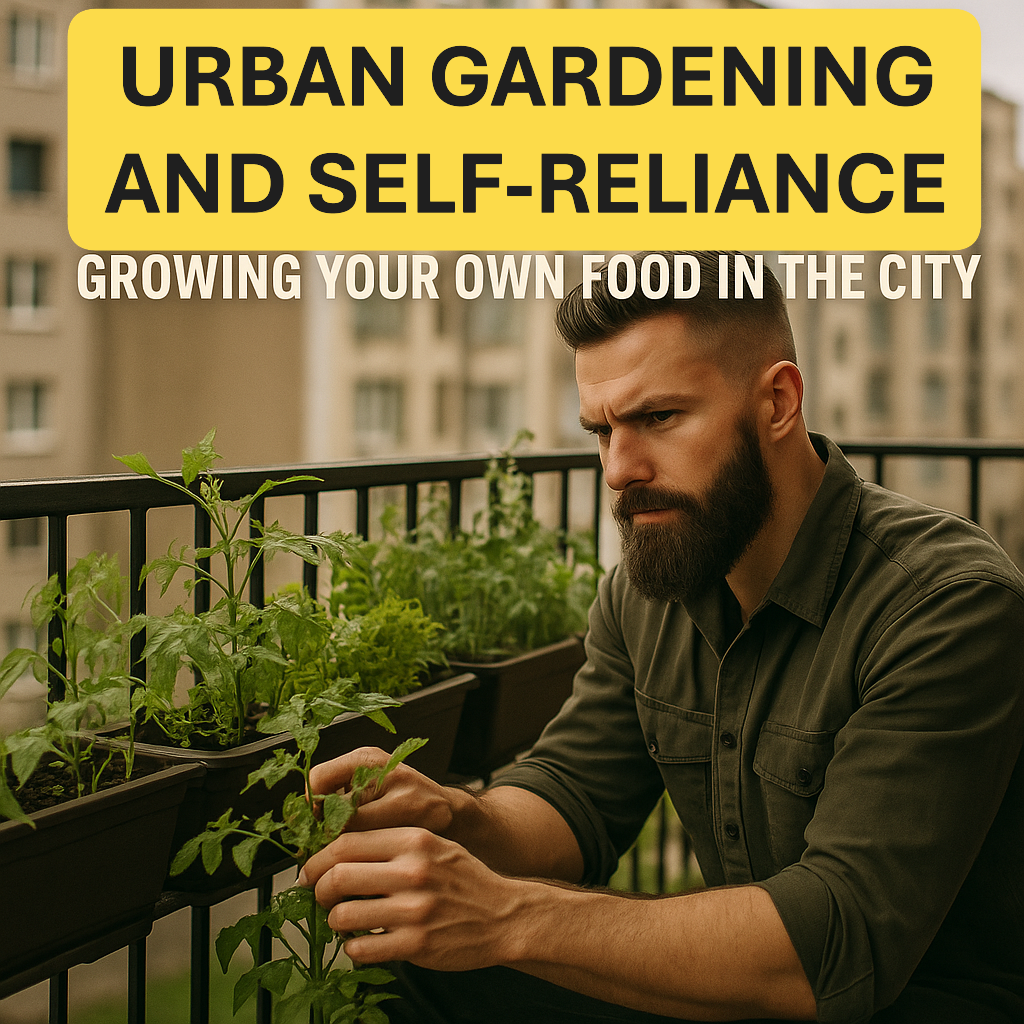There’s a certain swagger in eating something you grew yourself. Not swagger like you just got a new pair of Jordans, but the kind that comes from looking at a plate of sautéed greens and knowing you’re the entire supply chain. No mystery fertilizers. No pesticides with names that sound like Soviet tank prototypes. Just you, your plants, and the smug satisfaction of a man who could survive if the trucks stopped rolling tomorrow.
Urban gardening isn’t just about fresh basil for your pasta. It’s a statement: I own my food. And if you’re stuck in a food desert or paying eight bucks for wilted kale from a corner store, this is how you claw back control.
Why Grow Your Own?
- Trust Factor: You know exactly what went into it, no hidden chemicals, no guesswork.
- Nutrition Edge: Store-bought produce is a pale shadow of something picked hours ago. Fresh food packs more flavor, micronutrients, and crunch.
- Resilience: If the world throws another curveball, you’ve got dinner sprouting right in front of you.
- Sanity: Gardening forces you to slow down. It’s part meditation, part workout, part primal victory lap.
The Unique Urban Battlefield
Growing food in the city isn’t the same as tending a half-acre in the suburbs. You’re playing on hard mode:
- Space is tight: Your balcony is basically a postage stamp.
- Microclimates: One side of your building bakes like a pizza oven; the other gets shade all day.
- Wind and heat: High-rise living means gusts that can snap stems and sunlight that reflects off glass like a magnifying glass on ants.
- Soil and drainage: Without ground soil, you’re container-bound. That means watching for water retention and root health.

Balcony Gardening 101
Your balcony can feed you if you treat it like a tactical asset.
1. Scout the Location:
Check sunlight, wind exposure, and temperature swings. East and south-facing spaces are gold for light; west might need shading.
2. Plant Smart:
Compact crops are your allies, spinach, kale, chard, cherry tomatoes, bok choy, peas, and herbs like basil or cilantro.
3. Go Vertical:
Trellises or tiered racks save space without the high-maintenance headaches of a full living wall.
4. Use Big Containers:
Bigger pots hold more soil and retain moisture longer, giving roots room to breathe.
5. Manage Heat and Shade:
Shade cloth or mesh helps keep midday sun from turning your plants into salad before you’re ready to eat them.
6. Water Like a Pro:
Self-watering containers or trays keep your schedule flexible and your plants alive during long workdays.
DIY Balcony Planter Blueprint
Want a cheap, effective way to start?
- Base: A large, deep container (12–18 inches), preferably self-watering.
- Soil Mix: 1 part potting soil, 1 part compost, plus a handful of vermicompost.
- Layout: Taller plants in the back, shorter in front; herbs in smaller pots around the edges.
- Light: Reflective surfaces to bounce sunlight where it’s needed; shade cloth if the heat gets brutal.
- Water Rhythm: Morning check daily in summer. Deep water every 3–4 days if dry. Fertilize every 2–3 weeks.
Quick Schedule:
| Day | Task |
|---|---|
| Daily | Check soil, remove dead leaves |
| 3–4 days | Water deeply if dry |
| 2–3 weeks | Fertilize |
Seed-Starting Secrets
- Begin indoors in trays or peat-free pods.
- Keep soil moist but not soggy until germination.
- Transplant once true leaves appear.
- Label everything, mystery plants are less romantic than they sound.
Community Gardens: Land Without a Mortgage
If your “outdoor space” is a fire escape and a dream, community gardens are your ticket. Cities often rent plots for cheap, or trade space for volunteer hours. You get more growing room, fresh air, and a network of other growers who can swap seeds, tips, and extra harvests. They also boost local food supply and build social ties, something money can’t buy.
Urban Grower’s Arsenal
These are tools worth your time and cash:
- Gardyn Home Kit 4.0
A vertical, hydroponic tower that fits 30 plants in 2 square feet. Automated watering, lighting, and an AI assistant named Kelby. Ideal if you want maximum output with minimum daily fuss. - Bios All-Natural Organic Fertilizer
Eco-friendly, compostable, organic fertilizer, keeps soil biology thriving without chemical baggage. - Raised-Bed Planter
Compact, with a built-in water reservoir for tight spaces. Perfect for greens and herbs. - Back to the Roots Organic Plant Food
Vegan, plant-based liquid fertilizer. Low odor, easy to use, and keeps your greens lush.
Closing the Loop
Urban gardening isn’t about nostalgia for some rural past. It’s about agency. Every basil leaf, every tomato, every handful of spinach you grow is a vote for independence. You’re not just making food, you’re making a statement:
I can take care of myself, and I don’t need a grocery store’s permission to eat well.
Start with a balcony pot or a borrowed plot in a community garden. Build up. Learn what thrives, what fails, and what feeds you in more ways than one. The city might be concrete, but your corner of it can still be green, and on your terms.






Comments by The Dapper Savage